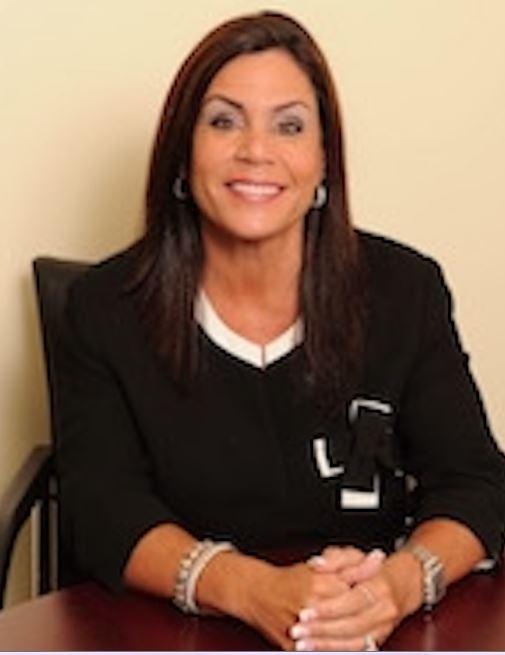[caption id="attachment_46203" align="alignleft" width="231"] Jeanine Frumenti, RN[/caption] Jeanine Frumenti, DNP, MPA, RN, CLNC, has seen the upsides of positive, uplifting leadership in action, and shares her thoughts on what makes a good nurse leader. Through almost four decades in healthcare, she worked her way from a bedside nurse to a nursing leader at several hospitals in and around New York and New Jersey. Frumenti now runs Holistic Leadership Consulting, a healthcare administrative consulting firm she founded in 2014. Q: What qualities identify a good nursing leader? A: They're always looking at what's good for the organization, what's good for their patients, their staff, their team
Jeanine Frumenti, RN[/caption] Jeanine Frumenti, DNP, MPA, RN, CLNC, has seen the upsides of positive, uplifting leadership in action, and shares her thoughts on what makes a good nurse leader. Through almost four decades in healthcare, she worked her way from a bedside nurse to a nursing leader at several hospitals in and around New York and New Jersey. Frumenti now runs Holistic Leadership Consulting, a healthcare administrative consulting firm she founded in 2014. Q: What qualities identify a good nursing leader? A: They're always looking at what's good for the organization, what's good for their patients, their staff, their team
-- it's not about them. And their focus stays on the goal.
While not every nurse with leadership skills is in a leadership position, they're passionate about what they do. They offer insights into the systems and processes, and ask questions: How can we do things better? How can we make staff's work life better? Nursing leaders also are knowledgeable, well-versed in the field and what's going on in the industry, and are not afraid to make evidence-based decisions. Finally, another piece: They're transformational, giving those around them a voice, encouraging them to share in the decision-making, and owning their work and their practice. When given autonomy to be their best, nurses and leaders flourish - and outcomes are always better. Q: What are the keys to developing good nurse leaders? A: It begins with sitting with them and talking with them about a realistic plan for professional growth and giving them the education they need from the get-go. Not everyone is vocal about what they want, so at the beginning, they will need assistance as they step into new roles. Then, follow up. Talk about what they like about their unit, what's working, what isn't and establish goals. Help them to learn delegation - they can't take on everything themselves. And always be a resource. It takes time, but it's very much worth it. The greatest investment we can make is in our leaders. Q: What does a healthy leadership culture look like? A: It's about a mindset. Healthy leadership begins from the top down. In a healthy environment, leaders don't just talk the talk, but they also walk the walk. They don't say they have good communication, but then speak to others rudely, for instance. People aren't micromanaged, but are rallied. In a healthy culture, leaders are confident enough to allow their people to flourish and let them get the credit when things go right. Goals and standards are very important; they are clearly set and clearly explained, so everyone knows what to expect. Most importantly, leaders set a tone. Maybe you don't have the best resources, or you're trying to provide top level care in a lower socioeconomic area. It can be discouraging. But leaders need to set that tone, and help their people do the best they can with what they have to still achieve positive outcomes for patients. The mindset, if it's not there, needs to be developed. Whether it can, depends on the people. And sometimes, unfortunately, some people just have to go. I would tell them, I wish you well, but perhaps you would be happier in a different place. Q: What inspired you when serving in leadership or in working to develop leaders? A: The thing that always, always kept me moving was my team. No matter how bad a day it may have been, the focus needed to stay on what we were doing for the patients, and I needed to set the tone and drive the vision. There was a time in my career when I was in school and working. At the same time my husband was fighting cancer. It was a very trying time. But being my best was also important, to help create - or in some cases, re-create - the kind of organization that people actually wanted: An environment where not only I, but everyone else, could believe their work is valuable and important, that they are making a difference and can succeed. When you see people flourish, it's just so great. It's so inspiring.
Continue learning with these popular CE courses
 60227: Interprofessional Guide to Pain Management (6 contact hours) Pain is experienced by almost all patients regardless of age or sex. Virtually all healthcare professionals help patients who are experiencing pain. To provide comprehensive team-based care, professionals must understand the limits of their own expertise, while gaining insight from and an appreciation for that of other disciplines. This requires health professionals to collaborate to better assess, understand and manage patients with complex pain. WEB338: It's Just a Stage 1 Pressure Injury. Or is it? (1 contact hour) The National Pressure Ulcer Advisory Panel modified descriptive language from pressure ulcer to pressure injury in 2016. Since skin can look very different based on an individual's skin tone, it's important to fortify assessment skills with tips you can use to help prevent "missed" deeper injuries. WEB342: Speedy Spanish for Healthcare Providers (1 contact hour) Have you thought about learning Spanish? Would you like to be able to confidently "speak the basics" with patients? This introductory and fun webinar will help you learn to greet patients, translate activities of daily living or help a Spanish speaker navigate through an appointment or hospital stay in Spanish. No prior knowledge of Spanish is required. Learn key phrases to help you speak Spanish immediately. If you know some Spanish already, this course will help you learn about "errors in translation" and strategies to increase your medical Spanish.
60227: Interprofessional Guide to Pain Management (6 contact hours) Pain is experienced by almost all patients regardless of age or sex. Virtually all healthcare professionals help patients who are experiencing pain. To provide comprehensive team-based care, professionals must understand the limits of their own expertise, while gaining insight from and an appreciation for that of other disciplines. This requires health professionals to collaborate to better assess, understand and manage patients with complex pain. WEB338: It's Just a Stage 1 Pressure Injury. Or is it? (1 contact hour) The National Pressure Ulcer Advisory Panel modified descriptive language from pressure ulcer to pressure injury in 2016. Since skin can look very different based on an individual's skin tone, it's important to fortify assessment skills with tips you can use to help prevent "missed" deeper injuries. WEB342: Speedy Spanish for Healthcare Providers (1 contact hour) Have you thought about learning Spanish? Would you like to be able to confidently "speak the basics" with patients? This introductory and fun webinar will help you learn to greet patients, translate activities of daily living or help a Spanish speaker navigate through an appointment or hospital stay in Spanish. No prior knowledge of Spanish is required. Learn key phrases to help you speak Spanish immediately. If you know some Spanish already, this course will help you learn about "errors in translation" and strategies to increase your medical Spanish.






